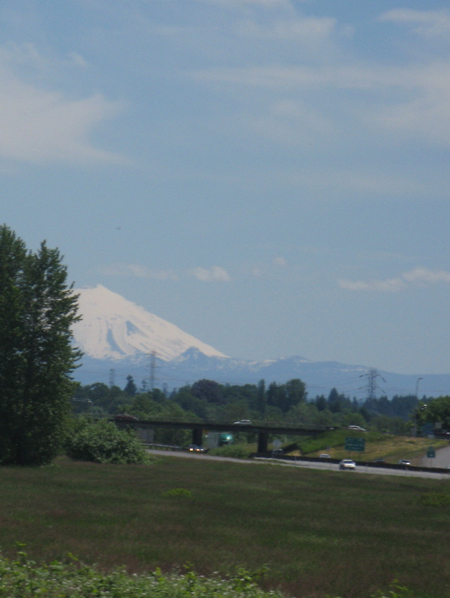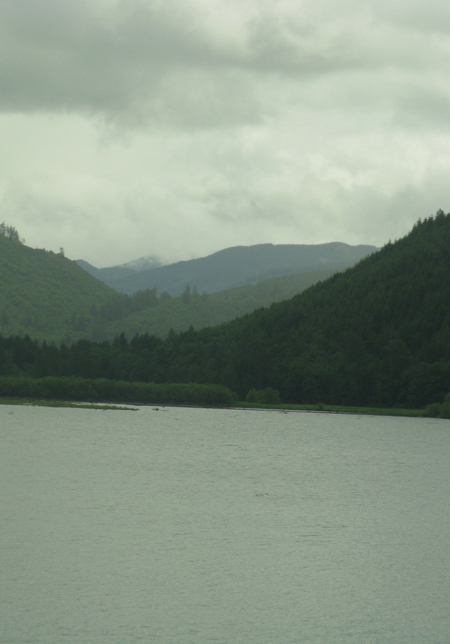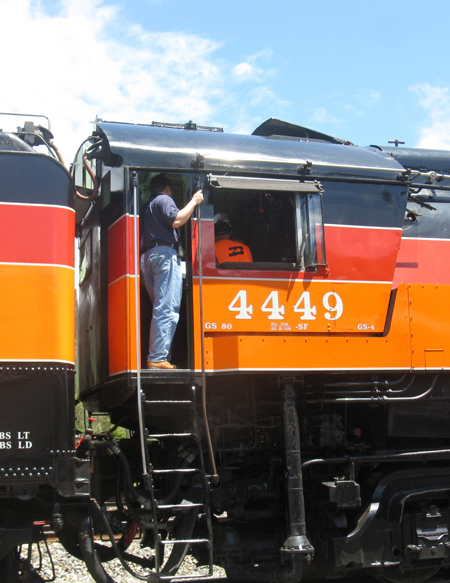Steam NRHS 2011 Convention
| During the National Railway Historical society convention in Tacoma, WA, in June 2011 I rode three trips behind steam. The first was on Tuesday, June 21, when many convention attendees traveled from Tacoma via the “Cascades” train or an overflow bus to Vancouver, Washington, to await the arrival of a train pulled by 4449 (shown coming into the station after crossing the bridge over the Columbia River from its starting point in Portland). |
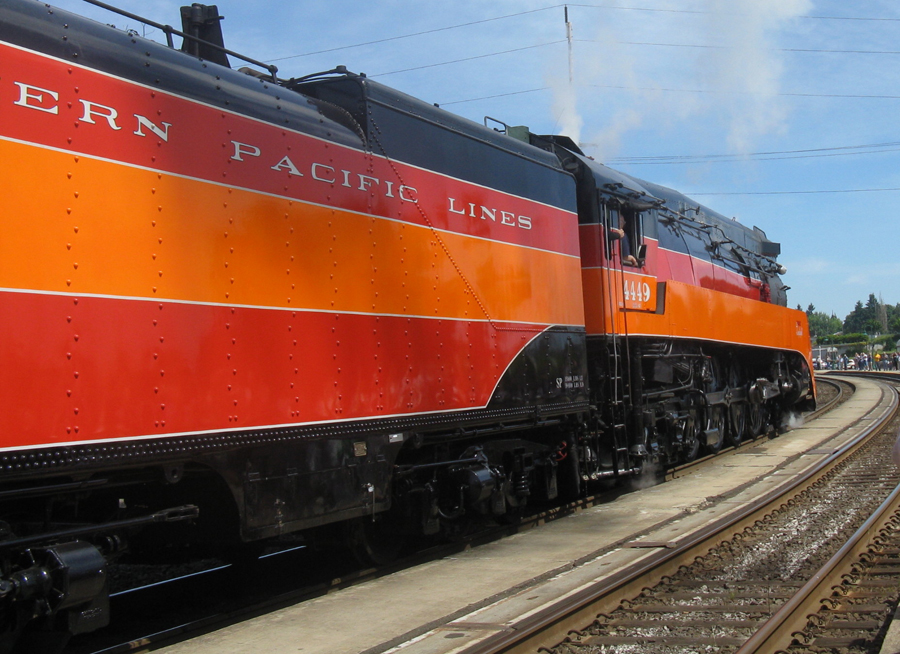 |
| Coach passengers rode in leased Amtrak cars; I spent part of the trip back to Tacoma in the open-doored baggage car. |
| The baggage car, directly behind the engines, was rough-riding but a wonderful place to hear the stack talk and whistle sounds from 4449, as well as giving a good view of the passing scenes. I can sometimes recognize when the usual engineer, Doyle McCormack, is at the throttle by his distinctive touch with the whistle. (For more on Doyle, see pictures of the trip to Stampede Pass on Saturday). |
|
||
| After arrival from Portland and Vancouver WA, 4449 rested in Tacoma. |
| The next convention steam trip was on Thursday, June 23; one group of passengers rode on buses to the headquarters of the Mr. Rainier Scenic Railroad in the Cascade foothills at Mineral, WA. The weather was cloudy and sometimes rainy, and Mt. Rainer could not be seen. | ||
|
| Most of the operating locomotives on the Mt. Rainier are geared steamers, including a Heisler and Climax. |
| One rod locomotive, 2-8-2 #70, had steam up but was not moved during our visit. |
| Another locomotive, 2-8-2T #17, has been in regular operation but is now in the shop for boiler work. |
| A train arrived from the other end of the line with another group of passengers from the NRHS; they would return by bus while our group took this train back toward Tacoma. |
| The engine pulling the trains on Thursday resembles a Shay, but technically it is a “Willamette,” a modified version built by the Willamette Iron and Steal works after the original Shay patents expired. |
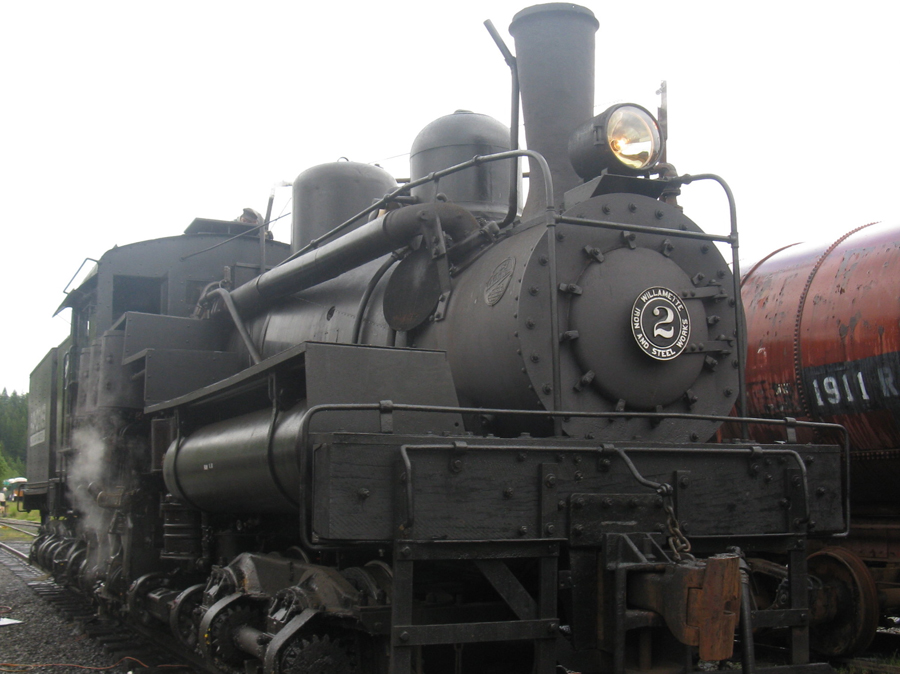 |
| While the engine took on water, I posed beside it. |
 |
| With servicing completed, the engine backed down to the passenger train. |
| A former NP F9 served as a “switcher” to move the passenger cars into position for loading. |
| The Willamette coupled onto the passenger cars. |
| The engine ran with the fuel and water bunker leading, and the smoke-box facing the cars. Unfortunately the trip from Mineral was almost all downhill, so there was not much sound from the engine. | ||
| I rode in this semi-open car (side openings instead of windows) next to the engine. |
| We passed the station at Elbe, where the regular trains to Mineral originate; there were a number of cars in storage or in use as restaurant and sleeping facilities. |
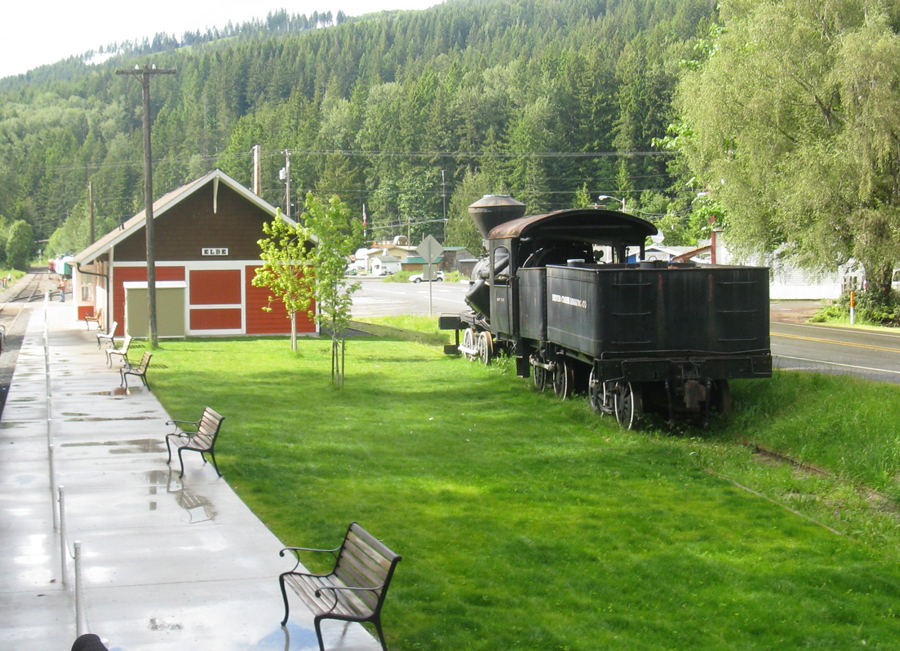 |
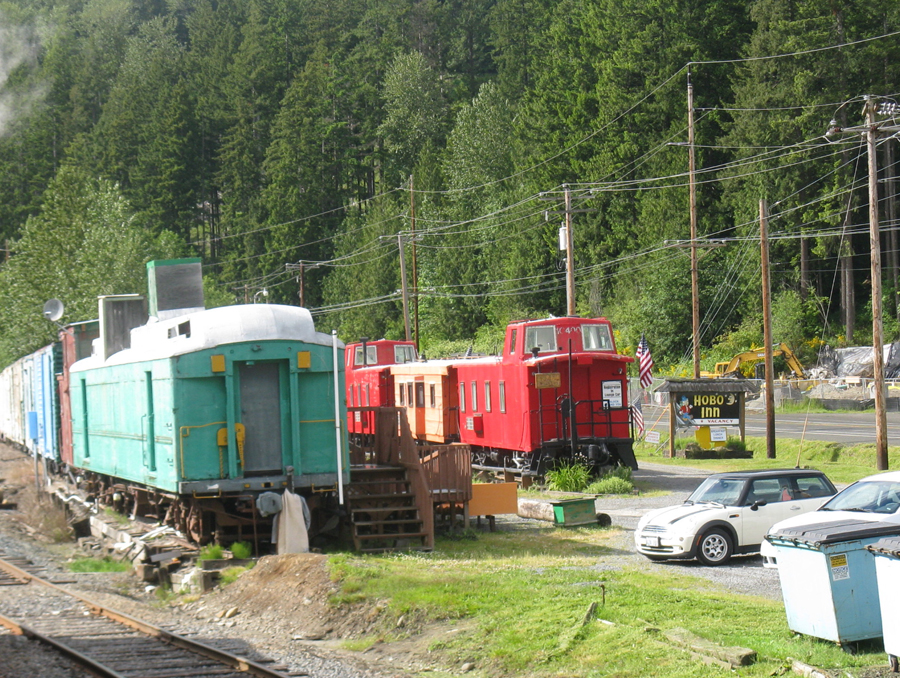 |
| We crossed a number of streams and rivers, including one on a high bridge which the train crept over VERY slowly. |
Passengers disembarked near Eatonville, and the engine pushed the train out of the way. |
| This diesel-powered train then backed in to load passengers for the rest of the return trip on Tacoma Rail, which operates freight service over the former Milwaukee line. |
| On Saturday, June 25, the steam train backed into Tacoma station for a trip on the former NP line over Stampede Pass. While coach passengers again rode in Amtrak cars, I treated myself to a ride in former CZ dome coach “Silver Lariat.” |
| The dome interior of Silver Lariat looks much as it did in CZ days, except that the seats have been re-configured in facing pairs. I rode a similar car on a family trip to California in 1955. |
| The lower level originally had regular coach seating; the hand-painted mural dates from the car’s construction in 1949. |
| In addition to Silver Lariat, other dome cars on the train included ex-CZ observation Silver Solarium, former Super Chief car Plaza Santa Fe (which originally had a private dining room under the dome), and a full-length dome which most recently ran on the Rio Grande Scenic. |
| Because the wye at Easton was too short to turn the entire consist, the observation car and other domes were next to the engines on the outbound trip. |
 |
| Though the dome windows were somewhat scratched and dirty, they still provided excellent views of 4449 in action. |
 |
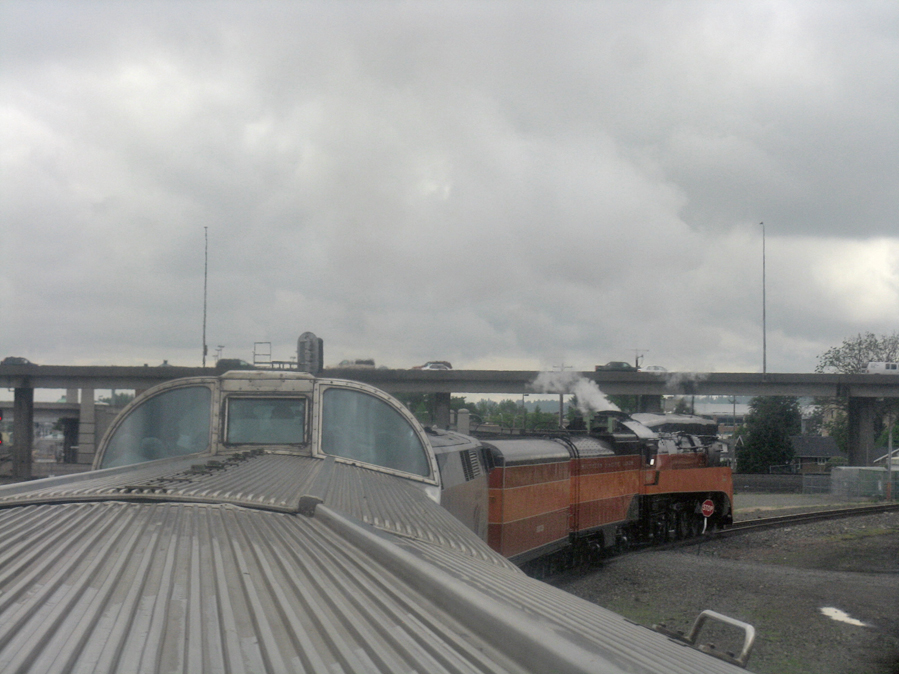 |
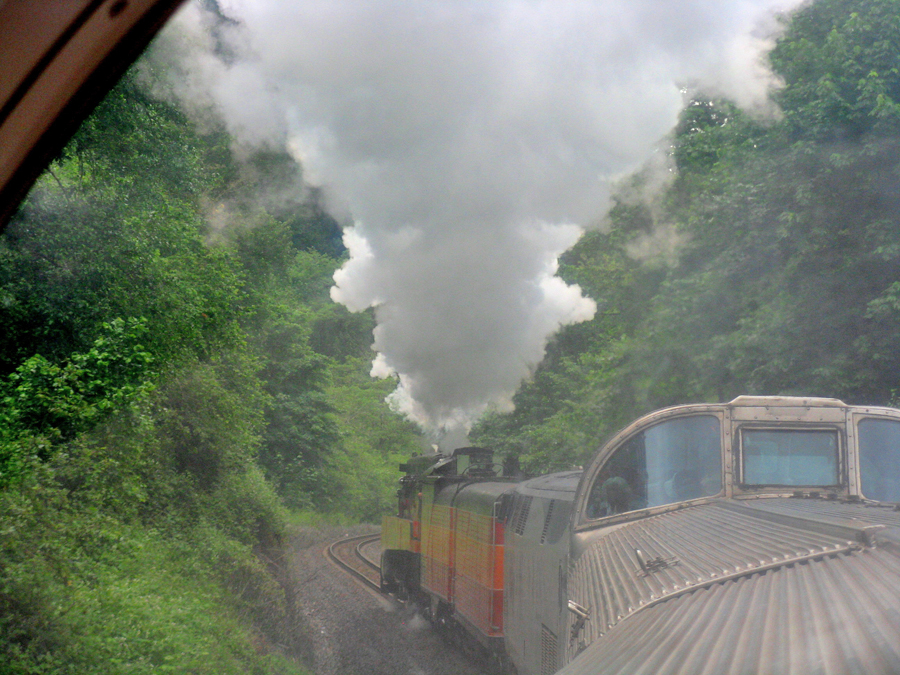 |
| The dome gave views of beautiful scenery as the train climbed toward Stampede pass; the short tunnel shown was a few miles west of the 9800 foot tunnel at the summit. |
 |
| In some places there were views of snow-capped mountains. |
| Passengers disembarked at the turn-around point at Easton. |
| The redoubtable Doyle McCormack was again at the throttle of 4449. He first came to Portland to prepare the engine to pull the American Freedom Train (in a red, white and blue livery) in 1975-76, and remained as its Chief Mechanical Officer. Doyle also gave an entertaining talk on Friday on “Restoring an Alco PA-1,” a task in which he has been involved for many years. | ||
|
| After uncoupling from the train the engines moved to the wye; as is typical with an Amtrak-compliant consist the P42 provided HEP, and also helped with dynamic braking. |
| After turning, 4449 headed for the front of the train; then the entire consist backed up and staged a run-by. |
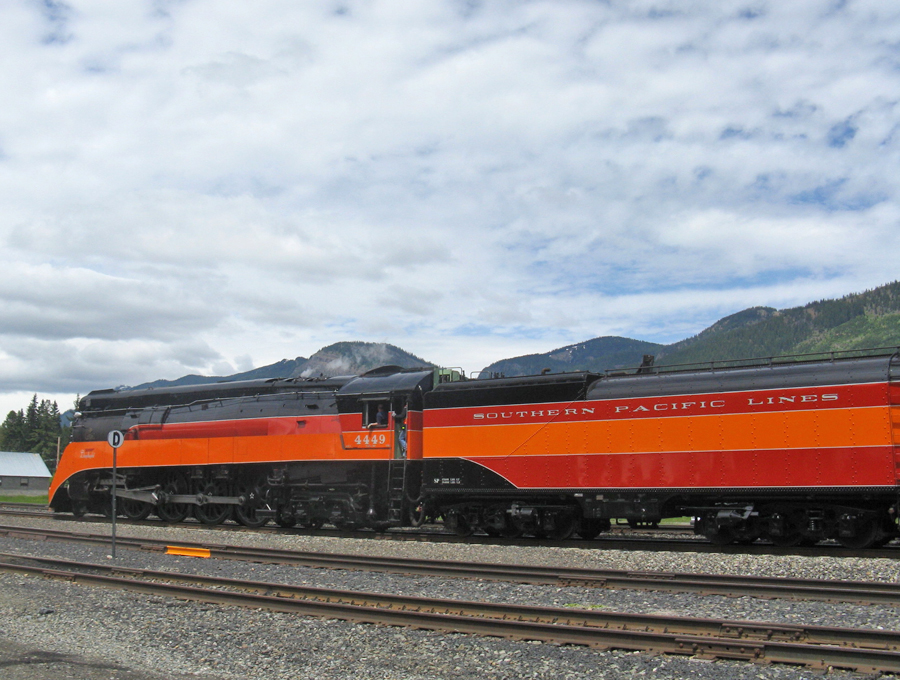 |
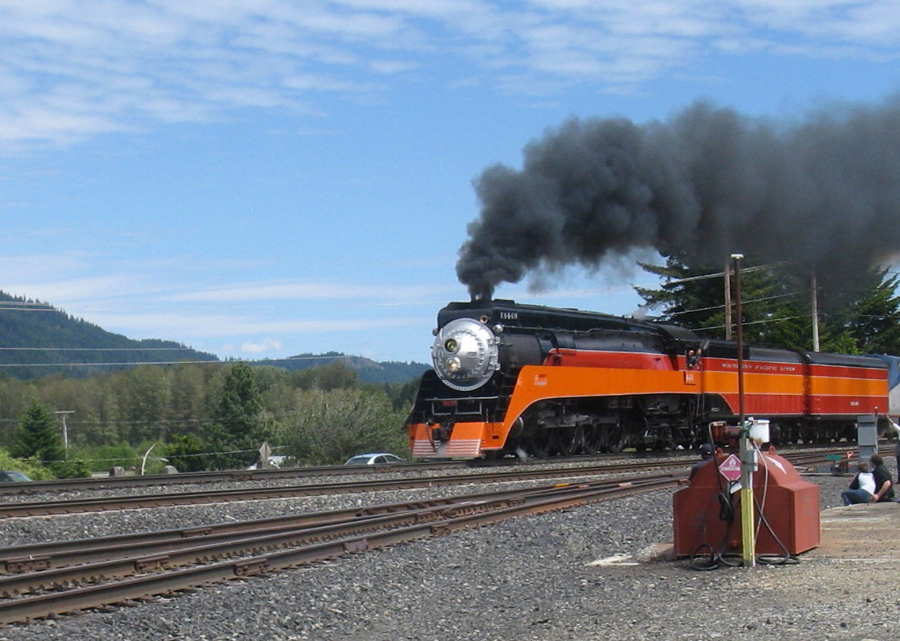 |
| The passengers re-boarded for the ride back to Tacoma, where the train arrived on time at about 6:30 PM. This was my last trip behind 4449, though on Sunday it pulled a train from Tacoma back to Portland. |
For pictures of other activities at the NRHS 2011 convention, see
NRHS Convention 2011
This page was designed and is maintained by Mike Condren.
If you have materials
that you would like to contribute, contact me at mcondren@cbu.edu
